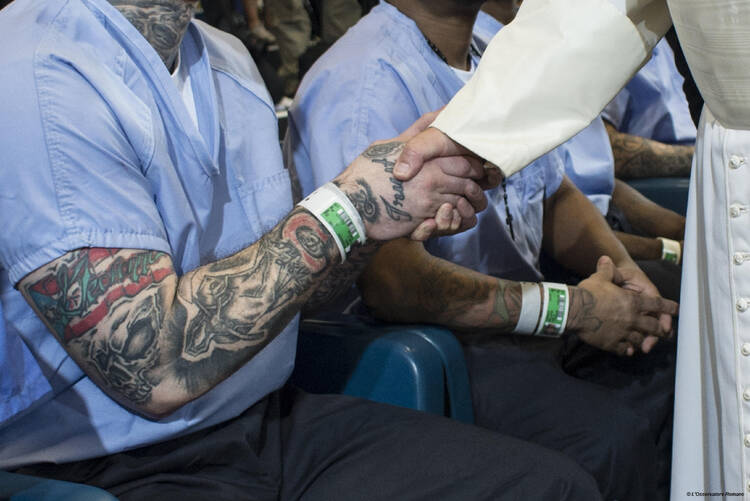On Sept. 27, while visiting inmates at the Curran-Fromhold Correctional Facility in Philadelphia, Pope Francis addressed the topic of mass incarceration in the United States, one of the most devastating crises in our nation’s history. He said, “Any society, any family, which cannot share or take seriously the pain of its children, and views that pain as something normal, or to be expected, is a society condemned to remain a hostage to itself.” In the United States there are over two million inmates in prisons and jails. As a nation, we must reflect on how and why this crisis became the norm.
Since 1980, the number of inmates in U.S. prisons and jails has grown from roughly 500,000 to over two million. Today the United States jails a higher number of its citizens than the top 35 countries in Europe combined. This has shattering effects on people of color, particularly African-Americans. Today, there are nearly a million African-Americans in our prisons and jails. One in every 35 black men is currently serving time. (A recent report has also found that while juvenile arrest rates have declined, African-American girls have become the fastest growing segment of the juvenile justice population.) For Latinos, the rate is one in 88. While making up only 30 percent of the U.S. population, African-Americans and Latinos account for 60 percent of the prison population.
In July, President Obama, in an attempt to further examine the prison system, visited El Reno Correctional Institution in El Reno, Okla., where he met with six inmates, including 24-year-old Jesús Chávez. Mr. Chávez, who was imprisoned at age 20 for dealing in ecstasy pills, describes losing everything at the time of his arrest, including his family. His mother and brother add that it has been painful dealing with Jesús’ absence. Sadly, Mr. Chávez’s case is not an exception.
A recent bipartisan deal reached by Senate leaders shows promise. The legislation would give prisoners with good behavior an opportunity for reduced sentences, in turn lowering the time served by low-level drug offenders. The Coalition for Public Safety is another bipartisan initiative that seeks to make the criminal justice system fairer by creating policies to provide repeat offenders and low-income communities with better resources, like increased funds for rehabilitation programs.
A true reform of our prison system, however, also demands that we question the way we treat violent offenders, who make up a majority of the prison population. All too often, violent offenders are locked away in maximum-security prisons, with little to no human interaction, or worse, sentenced to death. Pope Francis reminds us that while the onus must be placed upon inmates, a just society must also take part in their rehabilitation. He emphasizes that true recovery “benefits and elevates the morale of the entire community.”
How can we begin to deal with this crisis? It is encouraging that both Democrats and Republicans recognize the problem. But some of the proposed measures do not go far enough. We need to reflect more deeply on the purpose of our correctional institutions. The Heidering Prison in Berlin focuses on the redemption of prisoners rather than on their punishment. Wardens there are often psychologists, who provide therapy to inmates. Prisoners are allowed to wear their own clothes, cook their own meals and visit with family. They are given a sense of independence and self. The emphasis, according to Gero Meinin, director of the Berlin Ministry of Justice, is on helping prepare them for re-entry into their communities.
We can also better allocate government funds. Right now the United States spends over $80 billion annually to keep people incarcerated. Surely some of these funds can be allocated into programs that would help reintegrate released prisoners into society. Currently, the welfare reform law of 1996 prevents anyone convicted of a felony or state drug-related crime from receiving federally funded food stamps. Yet studies show that providing released inmates with resources, like food and shelter, lowers recidivism rates. Funds can also be allotted to companies that hire former prisoners. Research shows that only 40 percent of employers surveyed would consider hiring job applicants with criminal histories.
Finally, as Christians, we cannot forget the imprisoned, as if they were no longer part of our society. Pope Francis reminds us that we must see ourselves through the eyes of those behind bars and must see others through Christ’s eyes, adding that we must “create new opportunities: for inmates, for their families, for correctional authorities, and for society as a whole.”
Correction, Oct. 9, 2015: A previous version of this article stated that Pope Francis visited inmates at the Curran-Fromhold Correctional Facility in Philadelphia on Sept. 26. The pope visited the prison on Sept. 27.








